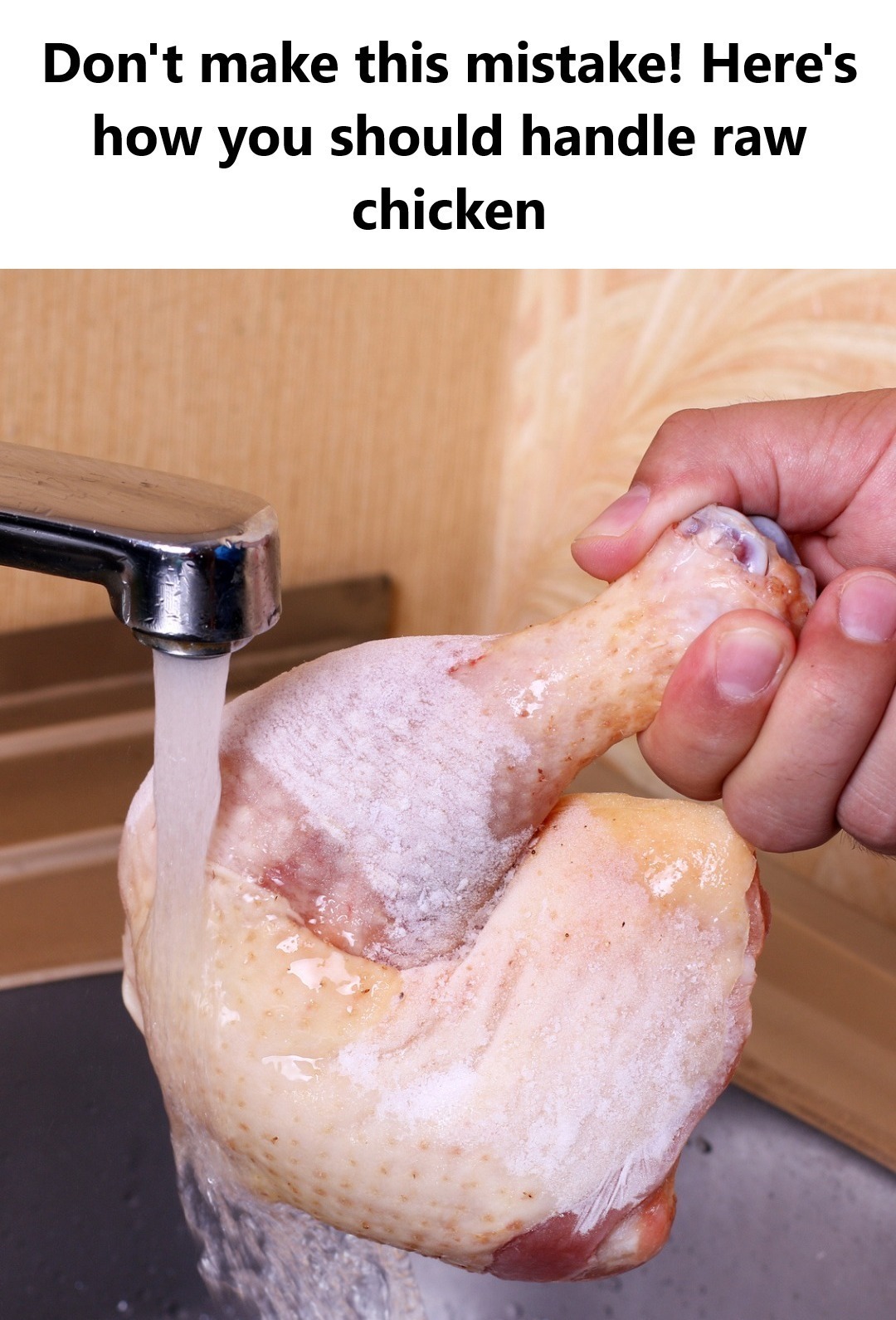ADVERTISEMENT
# Why Washing Raw Chicken is a Bad Idea: The Science Behind Food Safety and How to Handle Chicken Properly
## Introduction
When it comes to cooking raw chicken, there is a long-standing debate about whether or not it’s necessary to wash it before cooking. For years, many people have been taught to rinse raw chicken under cold water to “clean” it before cooking. It seems like a natural instinct—after all, raw meat can carry bacteria, and washing it just feels like a logical step in food safety. However, recent studies and food safety experts strongly advise against this practice. In fact, washing raw chicken can significantly increase the risk of spreading harmful bacteria and foodborne illnesses.
In this article, we will delve into the science behind why washing raw chicken is a bad idea, the risks associated with this practice, and the best and safest ways to handle raw poultry. We’ll explore the dangers of cross-contamination, debunk common myths, and provide you with helpful tips on how to ensure your chicken is safe to cook without the need for washing. By the end of this article, you’ll have a comprehensive understanding of food safety and be equipped with the knowledge to handle chicken properly in the kitchen.
—
## Chapter 1: Understanding the Risks of Washing Raw Chicken
### 1.1 The Dangers of Cross-Contamination
Cross-contamination is the process by which harmful bacteria are transferred from one surface to another. When you wash raw chicken, you are essentially creating a situation where harmful bacteria can spread throughout your kitchen. Raw chicken can harbor bacteria like **Salmonella**, **Campylobacter**, and **Clostridium perfringens**, which are known to cause serious foodborne illnesses.
These bacteria are often present on the surface of raw chicken, but they are not usually found deep within the meat. When you rinse chicken under running water, the water splashes and can spread bacteria to surrounding surfaces, including countertops, kitchen utensils, and even your hands. The very act of washing raw chicken increases the likelihood that these dangerous bacteria will come into contact with other foods, kitchen tools, and surfaces.
### 1.2 The Role of Water in Bacteria Spread
Water, especially when splashing or spraying, can carry bacteria over long distances. Studies have shown that washing raw chicken can result in bacteria being spread to surfaces up to three feet away from the sink. This is due to the high pressure of the water stream and the fact that bacteria are microscopic, allowing them to travel easily on water droplets. Even if you’re cautious about not splashing, bacteria can still spread through the fine mist of water particles in the air.
For example, if you wash your chicken in the sink, and then later prepare vegetables on the same countertop without properly sanitizing it, you are putting yourself at risk for foodborne illness. The bacteria from the chicken could easily transfer to those vegetables or any other food you handle, which may then be consumed without being cooked to the appropriate temperature.
—
## Chapter 2: The Bacteria You Can’t See
### 2.1 Salmonella: A Common Culprit
**Salmonella** is one of the most common types of bacteria found in raw poultry, and it is often the main reason why foodborne illnesses are linked to chicken. Symptoms of Salmonella infection include fever, abdominal cramps, diarrhea, and vomiting. According to the Centers for Disease Control and Prevention (CDC), **Salmonella** is responsible for nearly 1.35 million infections, 26,500 hospitalizations, and 420 deaths in the United States each year.
For Complete Cooking STEPS Please Head On Over To Next Page Or Open button (>) and don’t forget to SHARE with your Facebook friends
